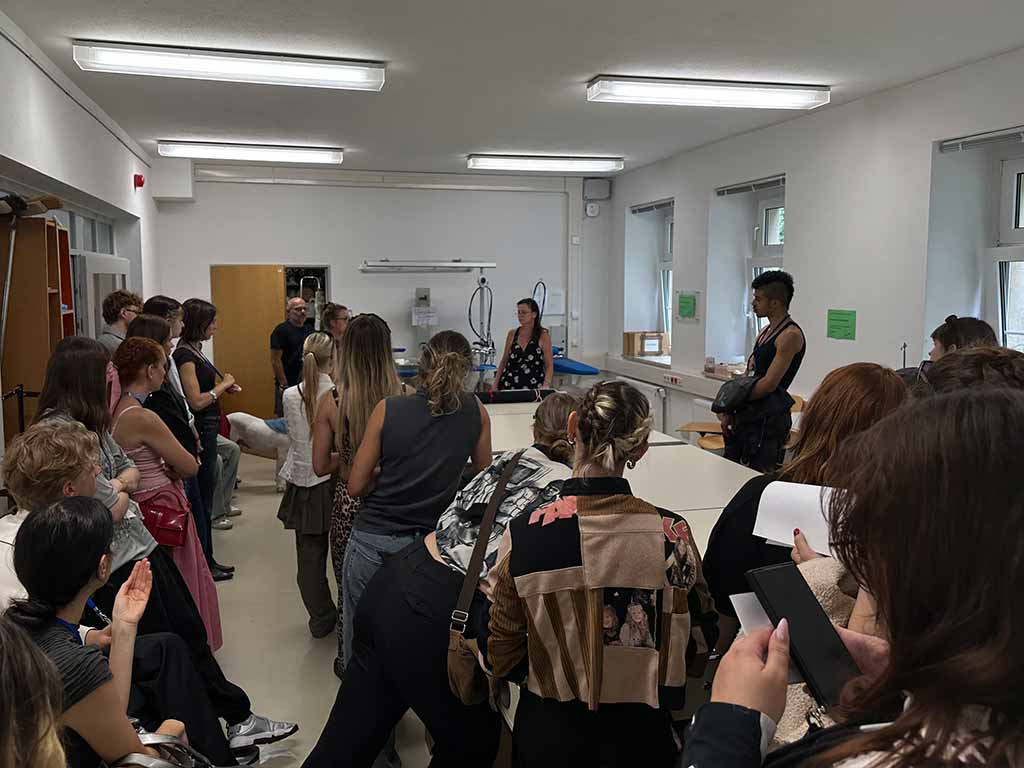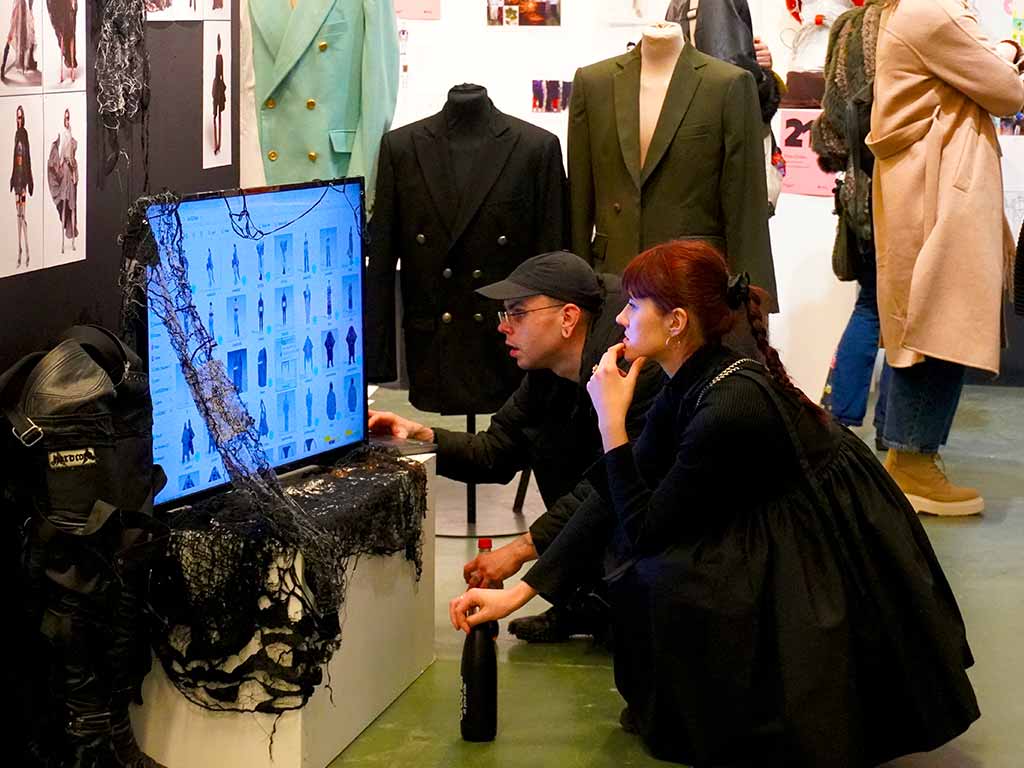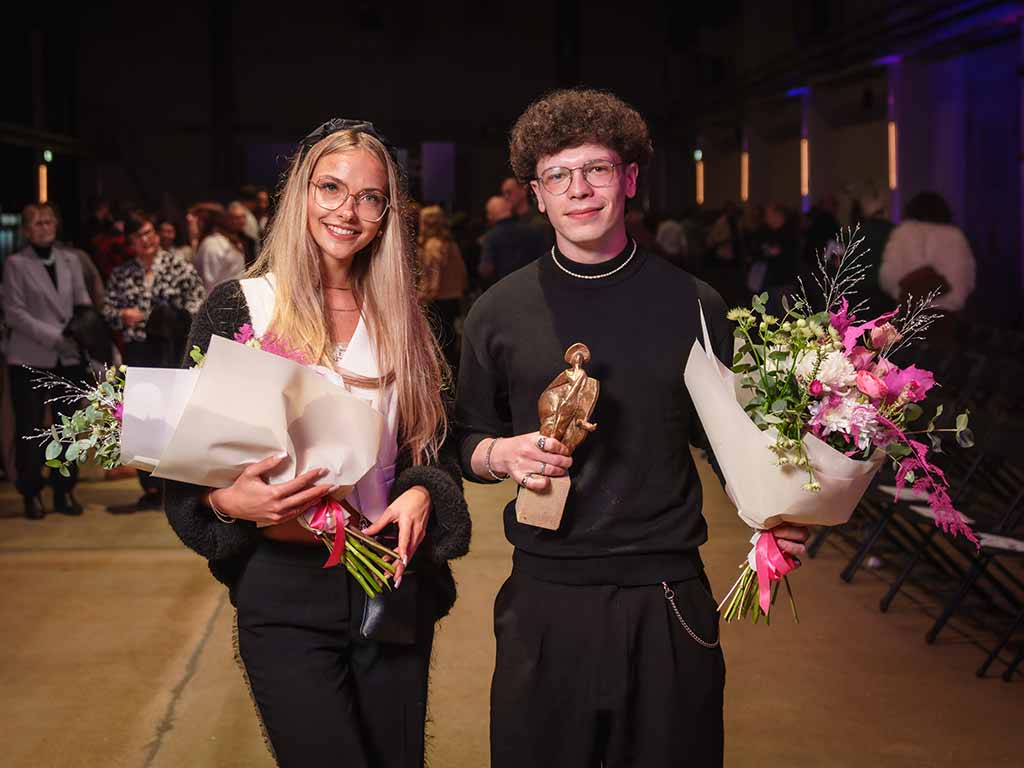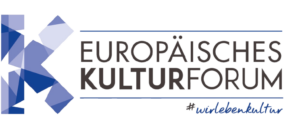
Where digital visions become material – in conversation with Prof. Dorette Bárdos, Head of the Fashion Design Department at the Faculty of Applied Arts Schneeberg
Professor Bárdos, you closely supervised the Schneeberg Makerspace as part of the FashionTEX project. What was your first impression when you saw the students’ work?
Professor Bárdos: The development stages varied greatly, and that’s precisely what made it exciting. Some students came with almost finished collections, others were still at the very beginning and only had digital designs in CLO3D. Our task in the Makerspace was to provide them with individual support: Which technique is suitable for which design? When is knitting appropriate, when 3D printing, when laser cutting or embroidery? It was an intensive but incredibly inspiring process.
How did the students develop over the course of the two weeks?
Professor Bárdos: It was impressive to observe. Many learned to translate their digital designs into real garments, thus bridging the gap between virtual and physical fashion. There were real “aha moments” when, for example, a digital prototype suddenly became physical through laser cutting or 3D printing. Particularly fascinating were projects in which 3D-printed structures were integrated directly into fabrics – a combination of technology and aesthetics that opens up entirely new design possibilities.
That sounds like a creative experimental laboratory. How would you describe the atmosphere in the makerspace?
Prof. Bárdos: It was indeed a vibrant laboratory – international, interdisciplinary, and highly creative. Students and experts from eleven European partner universities worked together, exchanging ideas, and combining their knowledge in new ways. This blend of expertise and a spirit of discovery was electrifying. A dynamic emerged in which courage, openness, and mutual inspiration played a central role.
I was personally thrilled by how quickly a climate of collaborative learning and design developed, characterized by respect, curiosity, and genuine enthusiasm for innovation.
What technologies were specifically used in the makerspace?
Prof. Bárdos: We worked with CLO3D, 3D scanning, 3D printing, motion capture, laser cutting, and digital embroidery. The students learned not only to use these tools technically, but also to think creatively, understanding the digital possibilities as part of their artistic process.
Of course, this wasn’t always easy. Sometimes an idea had to be pragmatically adapted when a material imposed limitations or a machine reacted differently than expected. But it was precisely this experimentation between digital vision and real feasibility that led to a deeper understanding.
What are you taking away from this project for the future?
Prof. Bárdos: The makerspace is far more than a learning format; it is a vision of how fashion will be created and experienced in the future: sustainable, digitally connected, and globally conceived. This format should definitely be continued.
For future projects, I would like to see a somewhat clearer focus, perhaps on specific technologies or subject areas, in order to further explore the results. At the same time, I see enormous potential in new forms of presentation: augmented reality, virtual reality, or holography can make the bridge between real and virtual fashion even more visible.
The makerspace demonstrates that the future emerges when craftsmanship, technology, and creativity don’t exist side by side, but rather inspire each other. And that’s precisely what makes this work so fascinating.

















